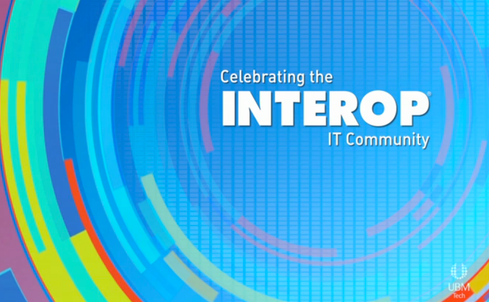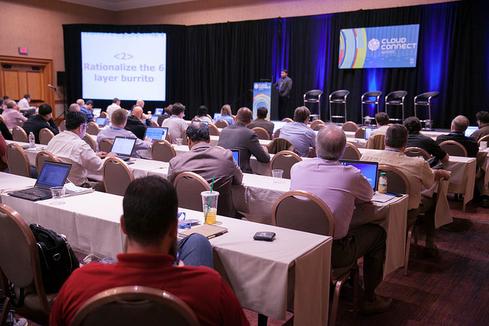What Is Platform-As-A-Service? Experts DisagreeWhat Is Platform-As-A-Service? Experts Disagree
Is PaaS just a feature of general-purpose infrastructure-as-a-service or a distinct layer of products in the cloud? Experts debate the definition of PaaS at Cloud Connect.


Interop 2014: 8 Hot Technologies
Interop 2014: 8 Hot Technologies (Click image for larger view and slideshow.)
In a panel on "The Future of PaaS in an IaaS World" at Cloud Connect Summit, colocated with UBM Tech's Interop Las Vegas, there was a surprising amount of disagreement on how to define platform-as-a-service as a form of cloud computing. Each member of the panel, which included several well-known cloud spokesmen, had a different definition.
Mark Russinovich, a technical fellow on the Microsoft Azure team, said he sees PaaS as "writing code that is integrated with a runtime environment, as opposed to code that is dropped into a virtual machine that's sitting on a bare-metal server, a legacy kind of server. That's the key differentiator point. The software knows something about the environment it's running in."
Margaret Dawson, HP's cloud evangelist and VP of product management, claimed: "It's really about that full environment for application development all the way through full, lifecycle management, even some of the orchestration stuff. It's about a full environment, not only for development of the application. To me, it adds a layer above IaaS."
Jesse Proudman, founder and CEO of Blue Box Group, a hosting service that, among other things, provides developer services and manages large-scale Ruby applications for customers, said: "For me PaaS is really about the service catalogue -- consumable types of services -- whether it be application delivery or container service. It's that abstraction that delivers the ability to move workloads from cloud to cloud. I think that's one of the most powerful features of PaaS technology in the market today."
[Want to learn more about the debate over the future of PaaS? See Cloud Crossroads: Which Way PaaS?]
Brent Smithurst, VP of product management at ActiveState, supplier of Stackato PaaS software, said Stackato is "a platform-as-a-service based on Cloud Foundry and our primary market is Fortune 500 enterprises who use the platform in-house, on-premises. We've actually tried to get away from calling it PaaS. We really just call it an application platform."
Figure 1: 
Krishnan Subramanian, director of Red Hat's OpenShift platform strategy, said that, in addition to Linux containerization and open source tools, "I have a simple definition for PaaS. The application scales with the platform. It scales with the infrastructure seamlessly."
So cloud platform-as-a-service, according to the PaaS experts, is a platform where the software knows about its environment in which it's running. It's also full application lifecycle management, from development through deployment and its production life. It's also a catalogue of application services. It's also an "application platform" and it's a platform that can scale with the application seamlessly. Is that clear?
Proudman listened to the definitions and inserted an additional thought: "I really believe PaaS as a technology stack focuses on application delivery; it goes beyond just packaging up applications or services and really needs to provide a full orchestration chain to deliver those applications." This comment makes deployment a more important part of PaaS.
Dawson also added a thought on why she continues to see PaaS as a distinct cloud layer separate from IaaS. "One reason that it doesn't become part of IaaS is you've got to be able to have application portability. If it's just tied to one type of IaaS, then you don't have that portability."
Red Hat's Subramanian, however, disagreed. "I don't think it's just application portability... It's application portability and portability of application environments." That is, all the things that the application needs to run -- its database interface, middleware, and security policies -- need to become
portable too, he said. Use of Docker containerization is one way to achieve that application environment portability, he added.
Each panel member's definition of PaaS largely reflected his or her company's strengths versus those of competitors. Microsoft's Windows Azure, now just Azure, was PaaS before it became IaaS, and it was equipped with collaborative versions of Visual Studio and .Net before general-purpose virtual machines became available on it. At a panel that attracted a large audience of developers, Russinovich wanted to remind attendees of Azure's roots. Azure added general availability of IaaS to its services in mid-April 2013, but it continues to attract Windows developers, even though "Windows" has been dropped from the name. Russinovich's definition distinguishes Azure PaaS from something that VMware and its Pivotal spinoff might call PaaS.
Proudman is the founder of Blue Box in Seattle, which offers OpenStack cloud workload orchestration and Cloud Foundry tools for developers working on applications. It has contracted for workloads by making it easy for developers to produce them and deploy them on Blue Box. Blue Box, to some extent, is a direct competitor to Red Hat's OpenShift.
HP tends to claim that it has a more vendor-neutral point of view than other companies and you can trust it to supply non-lock-in, OpenStack cloud technology. Dawson stuck to that theme, which includes the idea of being able to move a workload from cloud to cloud. HP Cloud is based on open source, public APIs used by several other public clouds and enterprise private clouds.
Smithurst's ActiveState with Stackato is also a competitor to Red Hat's Openshift and was early to market with a packaged version of Cloud Foundry for the enterprise. Its most direct competitor on that front is not Red Hat but the VMware/EMC spinoff Pivotal, which also packages open source Cloud Foundry for enterprise use.
The debate over PaaS's future continues among users and providers. Some knowledgeable people foresee it merging as a feature into general-purpose infrastructure-as-a-service. Others, such as Subramanian and Dawson, see it remaining as a distinct layer and set of products far into the future.
Emerging technologies are cutting costs and boosting setup speed and flexibility. IT's intrigued, our survey shows. Also in the How Cloud Will Transform The WAN issue of information: Salesforce CEO Marc Benioff has a vision that needs a dose of reality. (Free registration required.)
About the Author
You May Also Like






